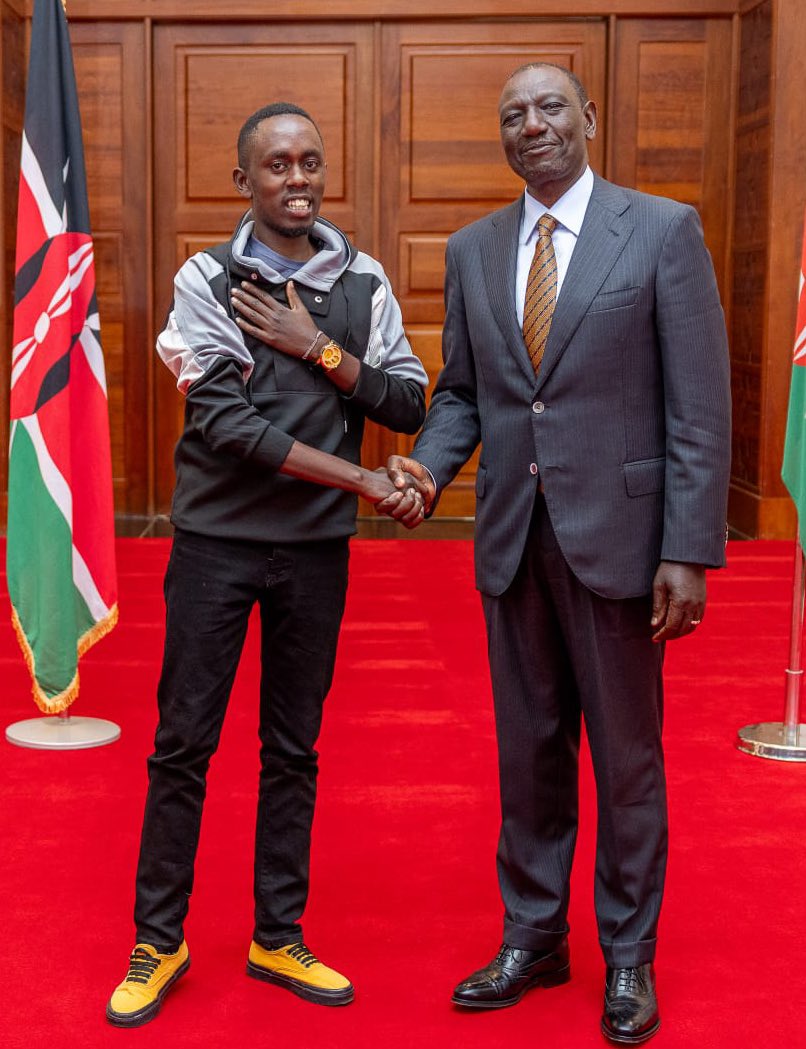In the wake of widespread Gen Z-led protests that have rocked Kenya since mid-2024, the spotlight has turned sharply to the country’s higher education system-a sector increasingly viewed as a battleground for government manipulation and neglect.
Recent announcements of university fee reductions, touted by the administration as a victory for accessibility, have instead exposed a deeper rot: a calculated effort to mislead the public while perpetuating financial barriers that cripple students and their families.
 Drawing from firsthand accounts of disillusioned students and critical analyses, this article uncovers how President William Ruto’s government is systematically undermining higher education through inadequate reforms, slashed funding, and the co-option of corrupt student leaders-often facilitated by his daughter, Charlene Ruto-to suppress dissent and maintain political control.
Drawing from firsthand accounts of disillusioned students and critical analyses, this article uncovers how President William Ruto’s government is systematically undermining higher education through inadequate reforms, slashed funding, and the co-option of corrupt student leaders-often facilitated by his daughter, Charlene Ruto-to suppress dissent and maintain political control.
The Illusion of Fee Reductions: A Band-Aid on a Gaping Wound
The government’s much-hyped fee cuts, announced in late July 2025, promised to make public university education more affordable under the New Higher Education Funding Model (NHEFM). Yet, as one student from the Technical University of Kenya (TUK) lamented in a recent message to activist Francis Gaitho, “no reduction of money took place because many students are in a disappointment after seeing the 2025/2026 household money they need to pay.”
This sentiment echoes a broader critique: the reductions amount to mere thousands shaved off five- or six-figure fees, fooling the average Kenyan (“mwananchi”) into believing real change has occurred.

Under the NHEFM, which replaced the Differentiated Unit Cost model in 2024, students are categorized into five bands based on household income, with fees adjusted accordingly.
Band 1, for the most vulnerable, might see fees drop from Sh120,000 to Sh114,048 per year, while Band 5 students-supposedly from wealthier backgrounds-face hikes or minimal relief, such as from Sh300,000 to Sh290,000.
Critics argue this “student-centered” approach is anything but, as it fails to address the core issue: skyrocketing costs that outpace inflation and family incomes. For instance, a student in Band 5 engineering program, previously burdened with Sh120,000 annually, now pays Sh114,048-a paltry deduction that does little to alleviate the strain.

Compounding this is the drastic cut to the Higher Education Loans Board (HELB) upkeep loans, which have been reduced for many, leaving students to scrape by on insufficient stipends. As one anonymous account detailed, “the reduction was only some few thousands out of 5-6 digit figures,” while HELB’s focus shifts to debt collection amid claims of funding shortages.
The result? Over 80% of campus students, many from needy backgrounds, struggle to afford basics like food, rent, and study materials, as their parents-guardians of the “hustler” economy Ruto once championed-bear the brunt of this fiscal betrayal.
This model doesn’t just burden individuals; it perpetuates inequality. Wealthier students glide through, while the poor are funneled into underfunded programs or drop out entirely.
The government’s narrative of “reform” masks a reality where higher education becomes a privilege for the elite, crippling Kenya’s future workforce and widening the socioeconomic divide.
The HELB Debacle: From Lifeline to Noose
At the heart of this crisis is HELB, once a lifeline for millions, now reduced to an allowance rather than comprehensive support. Upkeep loans, meant to cover living expenses, have been slashed, forcing students into precarious situations.
As the critique in the shared document blasts, “this upkeep loan is not just an allowance but a lifeline that covers essential needs such as food, rent, study materials, and transport.
The drastic cut in allocation is a betrayal of trust, especially at a time when the cost of living is at a record high.”
HELB’s announcement that it can no longer fund new applicants, prioritizing debt recovery instead, underscores the government’s misplaced priorities. While billions are siphoned through corruption-evident in scandals exposed by whistleblowers like Nelson Amenya-the education sector starves.

This isn’t inefficiency; it’s a deliberate strategy to discourage higher education among the masses, ensuring a compliant, undereducated populace less likely to challenge the status quo.
Corrupt Student Leaders: Puppets in Charlene Ruto’s Playbook
No discussion of this sabotage is complete without exposing the rot within student leadership.
Far from advocating for their peers, many university student leaders have been co-opted by the regime, normalizing oppression through bribes and patronage. Charlene Ruto, President Ruto’s daughter and a self-styled youth champion, stands at the center of this web.
Appointed patron of the Association of County Students Association Presidents – Kenya (ACSAP-K) in March 2025, she has hosted numerous forums with student leaders, framing them as “inter-generational dialogues.”
But critics see through the veneer: these are platforms for suppression, where leaders are bought off to stifle protests and endorse flawed policies like the NHEFM.
Posts from activists like Francis Gaitho reveal the extent: “University student leaders are pretending to host forums to denounce the defunding of education, but don’t give them airtime. They’re all on Charlene Ruto’s payroll.”
Another exposes how Charlene sponsors events that are abruptly canceled when scrutiny arises, with leaders accused of “eating handouts from the regime.” Sophie, in a viral video, details how Charlene buys off leaders to prevent them from joining Gen Z uprisings. Hashtags like #TubongeNaPrezzo-promoted by these leaders-serve as distractions, urging “dialogue” with the president while ignoring demands for HELB restoration and fee overhauls.
This co-option normalizes the regime’s excesses, including the violent suppression of protests where dozens have died-actions for which President Ruto, dubbed a “killer father” by detractors, bears responsibility.
Leaders like those in ACSAP-K, inspired by Charlene, back proposals like Raila Odinga’s Intergenerational Conclave, diluting youth rage into managed “unity.” Corruption in student unions is rampant, with surveys showing over 70% of students viewing their leaders as more corrupt than university managers.
By aligning with Charlene, these “sellouts” betray comrades, ensuring dissent is quashed for Ruto’s political expediency ahead of future elections.
A Call to Arms: Reclaiming Higher Education from the Oppressors
The government’s actions-minimal fee tweaks, HELB cuts, and leader co-option-form a pattern of systematic crippling, prioritizing debt servicing and elite perks over education.
As the shared critique urges, “What is more disheartening is that this is happening amidst a call by the student leaders ‘#Tubonge na prezo’… I hope ‘mkibonga na prezo’ you’ll make sure to tell him we are tired of the games.” Students must rise, occupy leader offices, and demand transparency.
Kenya’s youth, enduring enough emotional turmoil from a broken system, deserve better. If the regime won’t listen, perhaps a war-figurative or otherwise-will force change.
Comrades, viva! The fight for accessible education is the fight for Kenya’s soul.

